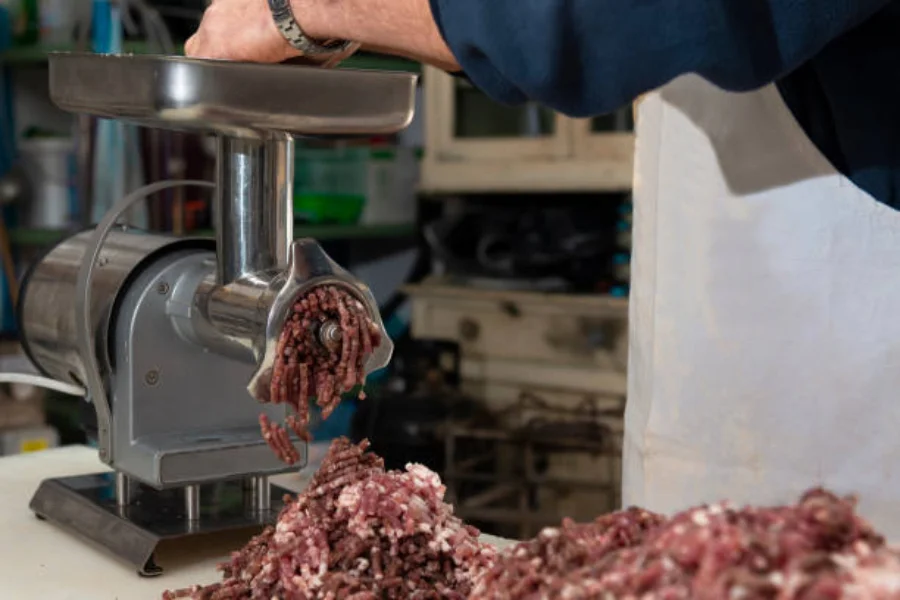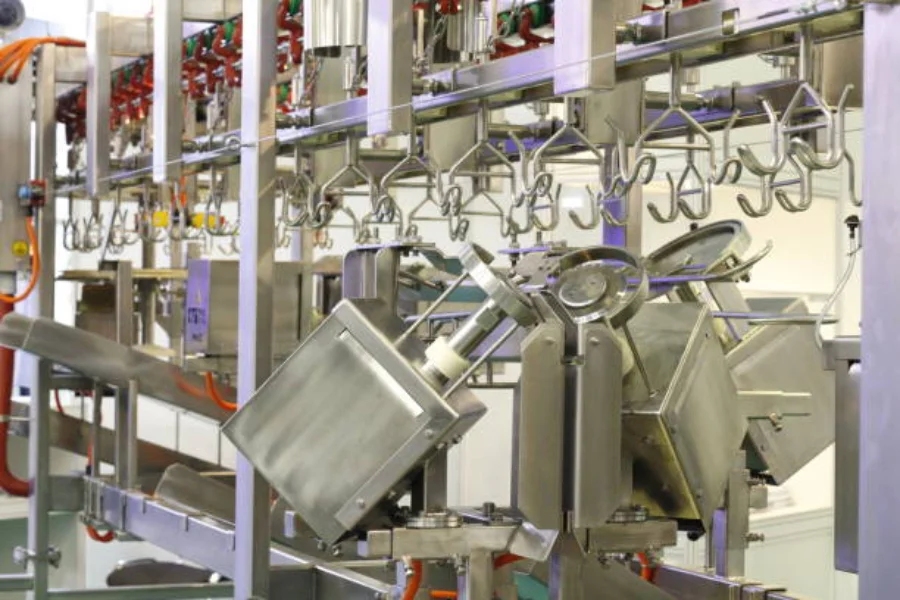Meat products pass through a processing plant before they become fit for consumption. The process involves the use of meat product making machines, which make the whole process efficient and easy. Also, these meat product making machines are more sanitary compared to other traditional methods that were used in the past. Buying any meat product processing machines is tricky. This is because there are many of these machines available in the market and not all of them are reliable and durable.
This article will focus on educating buyers on how to select the ideal meat product making machines and the many types of equipment used in the process. Additionally, it provides an overview of the meat product making machines market.
Table of Contents
Overview of the meat product making machines market
Meat product processing machines
How to select ideal meat product making machines
Summary
Overview of the meat product making machines market

The meat products making equipment industry has witnessed significant growth over time. This has been largely influenced by the increased speed and efficiency of machines and the rise in the adoption of automated systems. The demand for meat products will continue to increase due to lifestyle changes and varying consumer preferences. Generally, the market has been segmented by meat type, application, and geography.
Maximize Market Research indicated a USD 7.2 billion market value for the global meat product making equipment in 2021. The value of the market was further projected to expand at a compound annual growth rate (CAGR) of 5.8% up to 2029. This growth will be due to the increased dominance of meat culture in various countries across the world, which will rise the demand for meat processing machines.
Accounting for a 28.4% share of the market was the freshly processed meat segment. Also, there has been a surge in investments in the automation of meat products making equipment in states like the US, UK, Japan, India, and Germany. In addition, the North American region registered a 40% market share. Considering meat type, processed pork accounted for 45% of the global market share. Lastly, based on machine type, the cutting equipment held a 21.7% share of the market.
Meat product processing machines

Inside meat products making plants are various machines that vary in function and size. The most common function of this equipment is to convert raw meat into ready-to-consume products. They increase meat consistency and remove toxins. This is achieved by the food-safe stainless steel that ensures products are safe and sanitary.
Generally, most meat processing factories have these common machines:
– Meat grinders
– Band and circular saws
– Meat cutters
– Electrical conveyers with automated feeders
– Smoked meat slicers
– Blenders and meat mixers
– Freezers and coolers
– Floor drainage
How to select ideal meat product making machines
1. Power
On a general basis, there exist two types of machinery to choose from when considering the power source. Meat products making equipment can either be manual or electric. Manual machines require more effort, so they are more suitable for small-scale production. Buyers should lean more towards electrical meat processing machines. This is simply because the electric types are easy to use and consume less time to process larger quantities of meat.
2. Speed
Speed is essential among various meat processing machinery applications like cutting and grinding. Automation of meat products making machines has increased product safety and productivity. However, some of these operations can pose danger to workers and product safety if the speed is extremely high. Regulations on the speed required in most meat processing activities should be adhered to by buyers. For instance, the speed limit for pork processing is set at 1106 hogs per hour for most plants.
3. Cost
Meat products making machinery varies in price depending on the capabilities and complexity. Buyers first need to determine the requirements of their production line in terms of the input and the final product. They should also decide on the quantity they intend to produce and the appropriate product choice. Afterward, they should select the machine that accommodates the aforementioned production needs based on their set budget. The quality of meat processing equipment cannot be compromised if the buyer has sufficient budgetary plans.
4. Durability
Buyers should purchase meat processing machines that are made out of sturdy materials. This will ensure the longevity of the machines. The required attachments and parts should be of high quality too. They are meant to complement the functioning of the main machine unit and endure multiple other uses. For instance, most machines are made of stainless steel, which is strong enough and rust-resistant. A quality machine should guarantee high performance for a long time.
5. Versatility

A machine’s versatility is determined by its capacity to carry out other tasks apart from its main functions. Some meat products making machines have accessories that execute the extra functions while others have in-built components. For instance, some meat grinders come with sausage stuffing parts and varying size blades to cut meat into the desired sizes and shapes. Buyers should invest in multi-purpose equipment that has the needed attachments to perform various meat processing operations.
6. Capacity
Capacity involves the amount of meat a machine can process at a time. Buyers should choose the right machinery depending on the amount of meat they intend to process over a specified period. There are machines that can be used at home for slaughtering and carcass fabrication. These machines are generally small in size and can be purchased and used with relative ease. On the other hand, there is equipment that is used for commercial purposes in large meat processing plants. The plants require machinery that can handle the demands of the various production lines. For instance, for meat grinders, aspects like outlet diameter and size of the grinding plate should be taken into consideration.
7. Meat production type
The processing of different meat and meat products requires the use of different machines. Some of the meat types include pork, poultry, fish, and beef. There are processes like cutting, smoking, the addition of chemical preservatives, and grinding which would require the same machines being used on the different meat types. However, some of these meat types require different processing operations and thus different machines. For instance, sausage-filling machines are specific to stuffing and kinking sausages. Some of the products of meat processing include corn beef, sausages, meatloaf, bacon, curries, ham, salami, chicken-n-ham, and cut-let mix. In this case, buyers need to determine the type of meat production they intend to invest in so as to select the right equipment.
Summary
Clearly, the meat processing industry has had great improvements in techniques, machinery used, and safety regulations. Buyers are encouraged to invest in good quality equipment while considering the meat products they intend to produce. This will enable them to execute meat product making tasks right and efficiently. They should also take time to learn what their plants need to produce market-relevant products. To acquire the most appropriate meat processing machinery, visit Alibaba.com.




